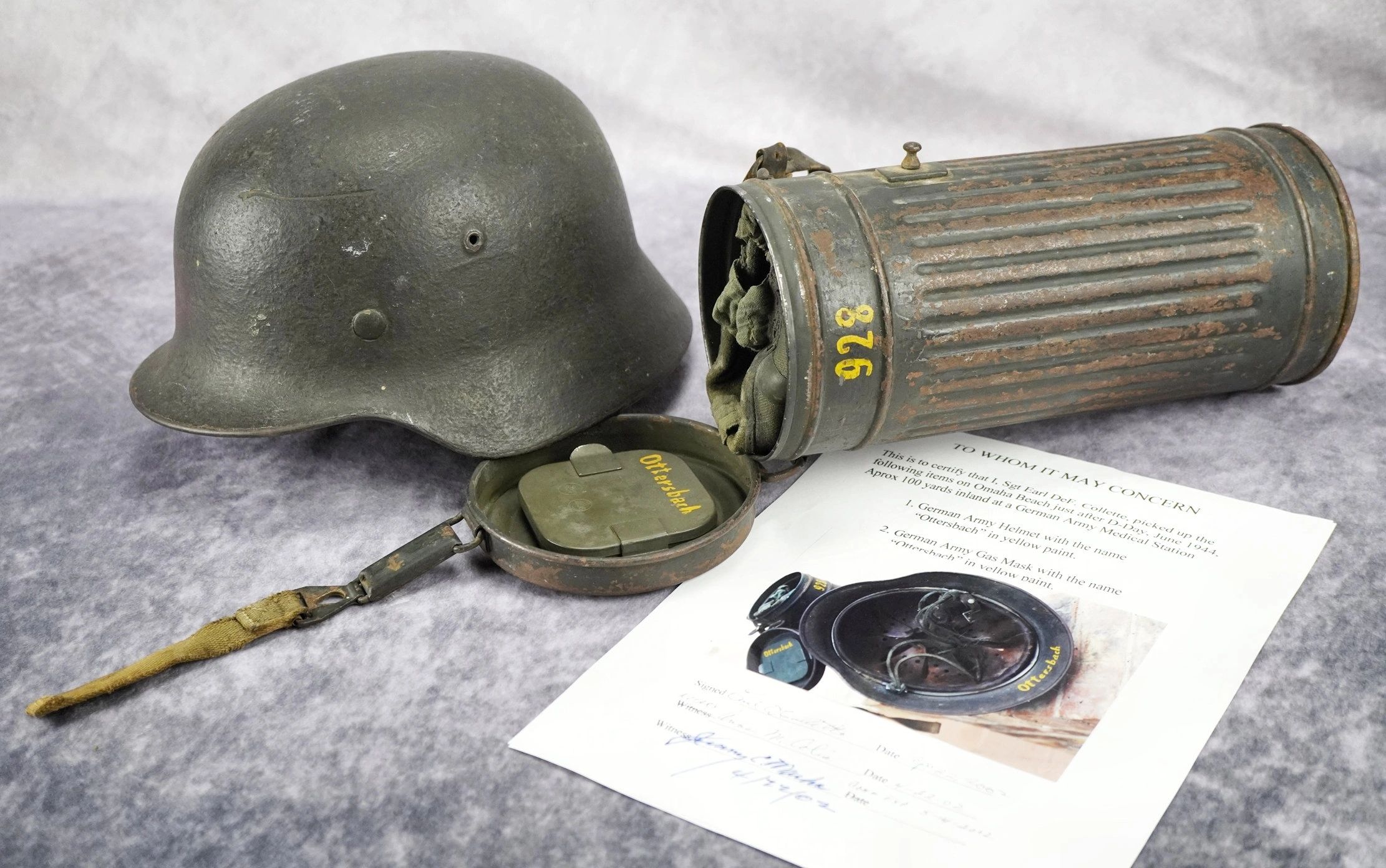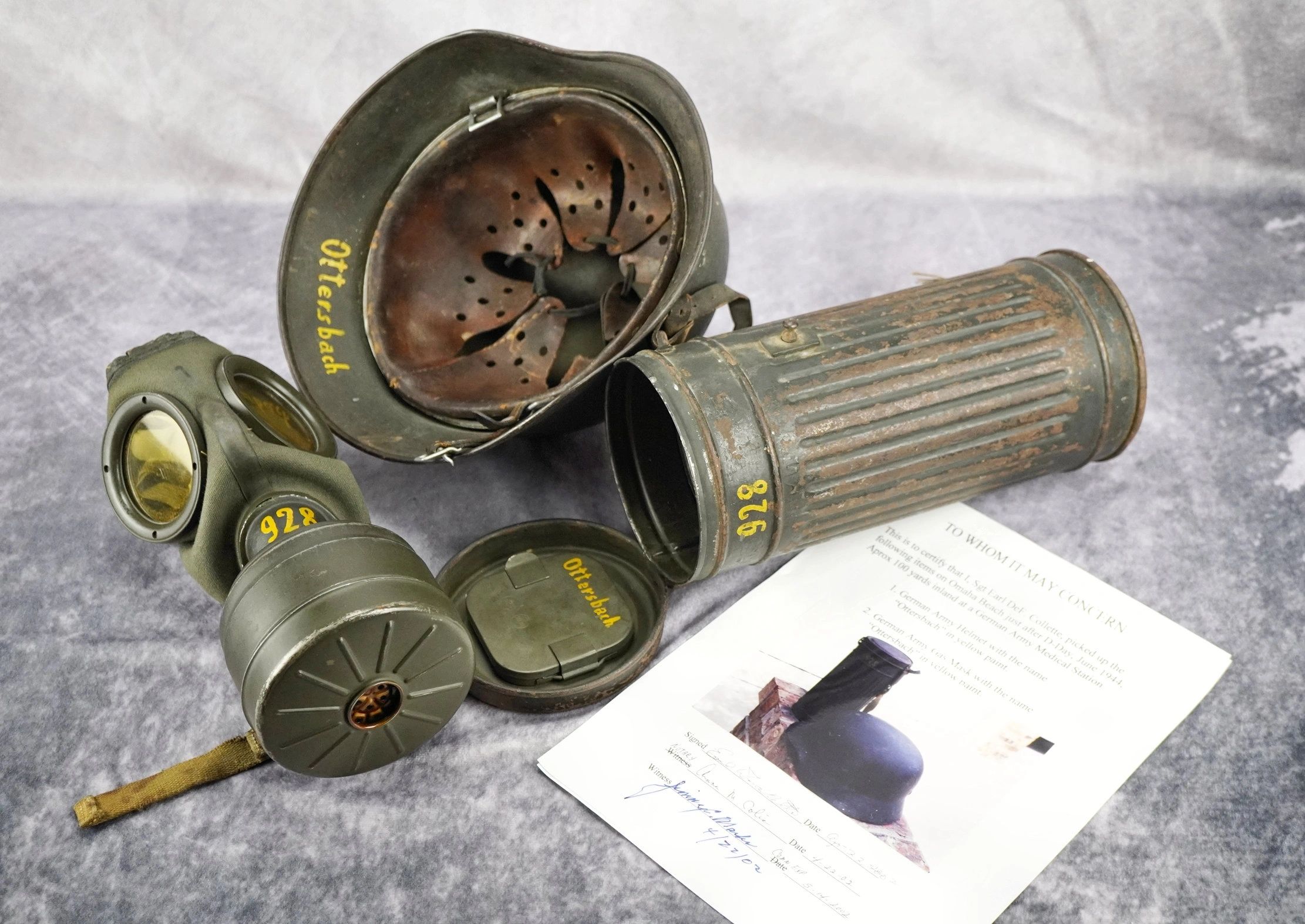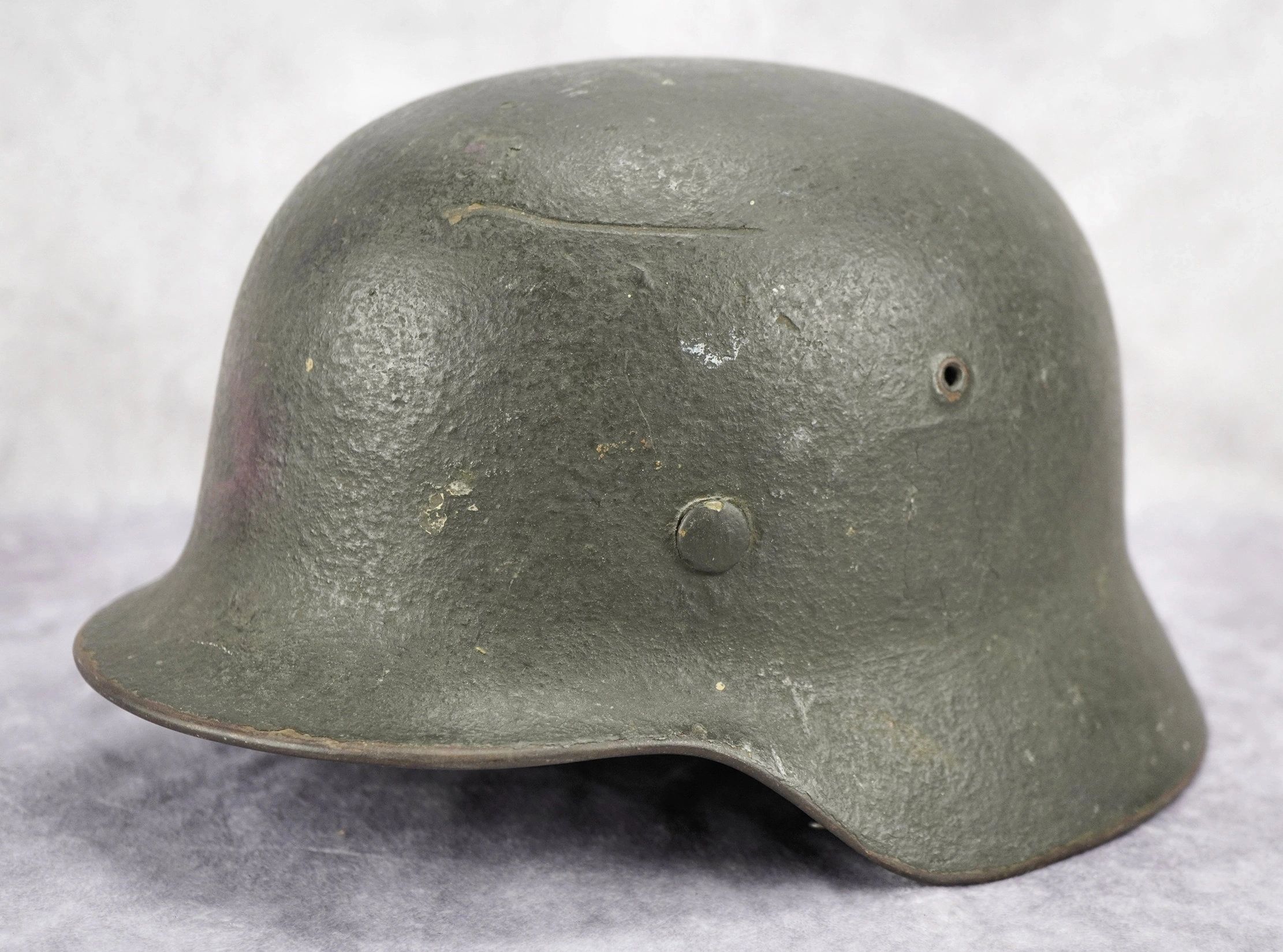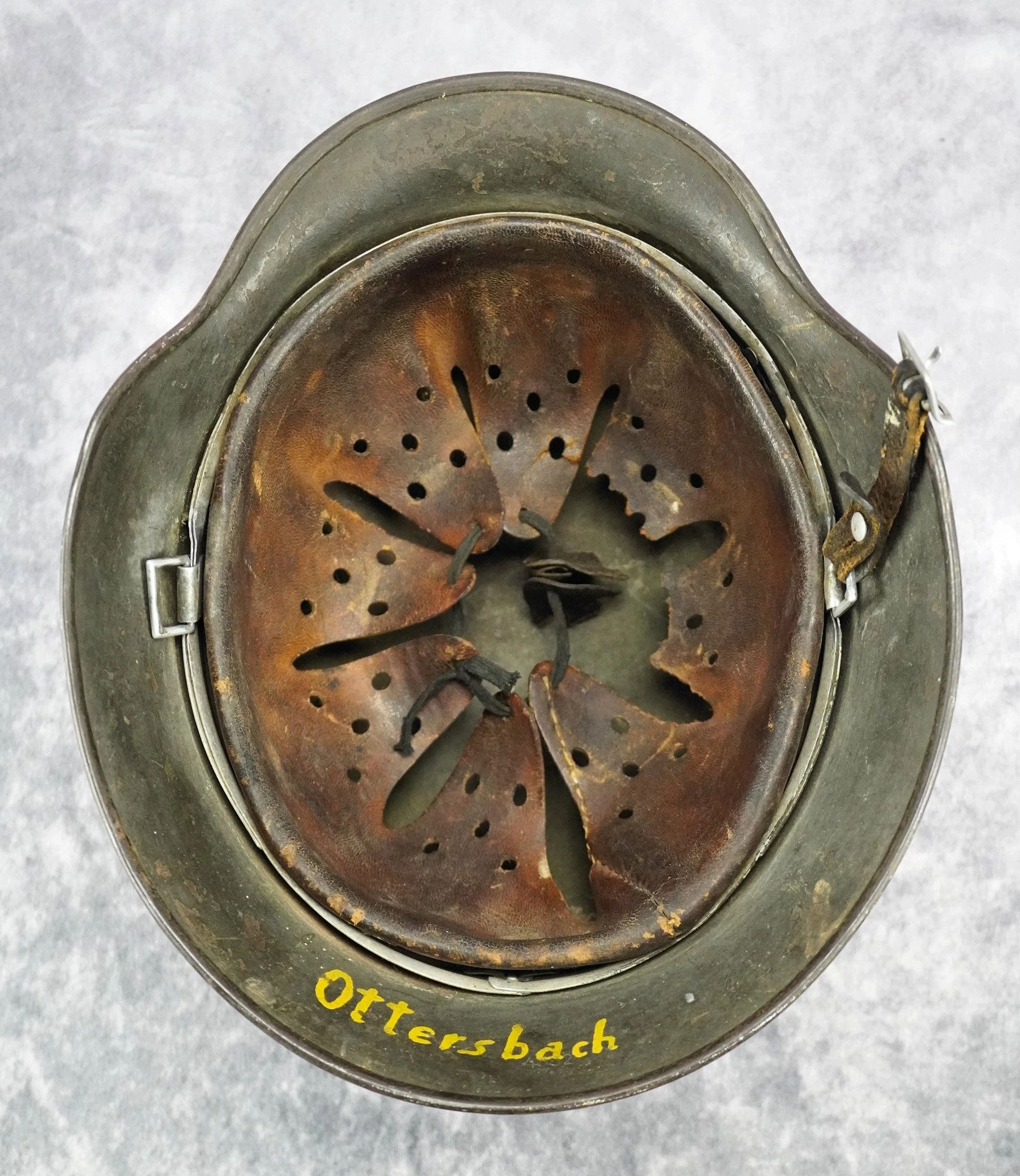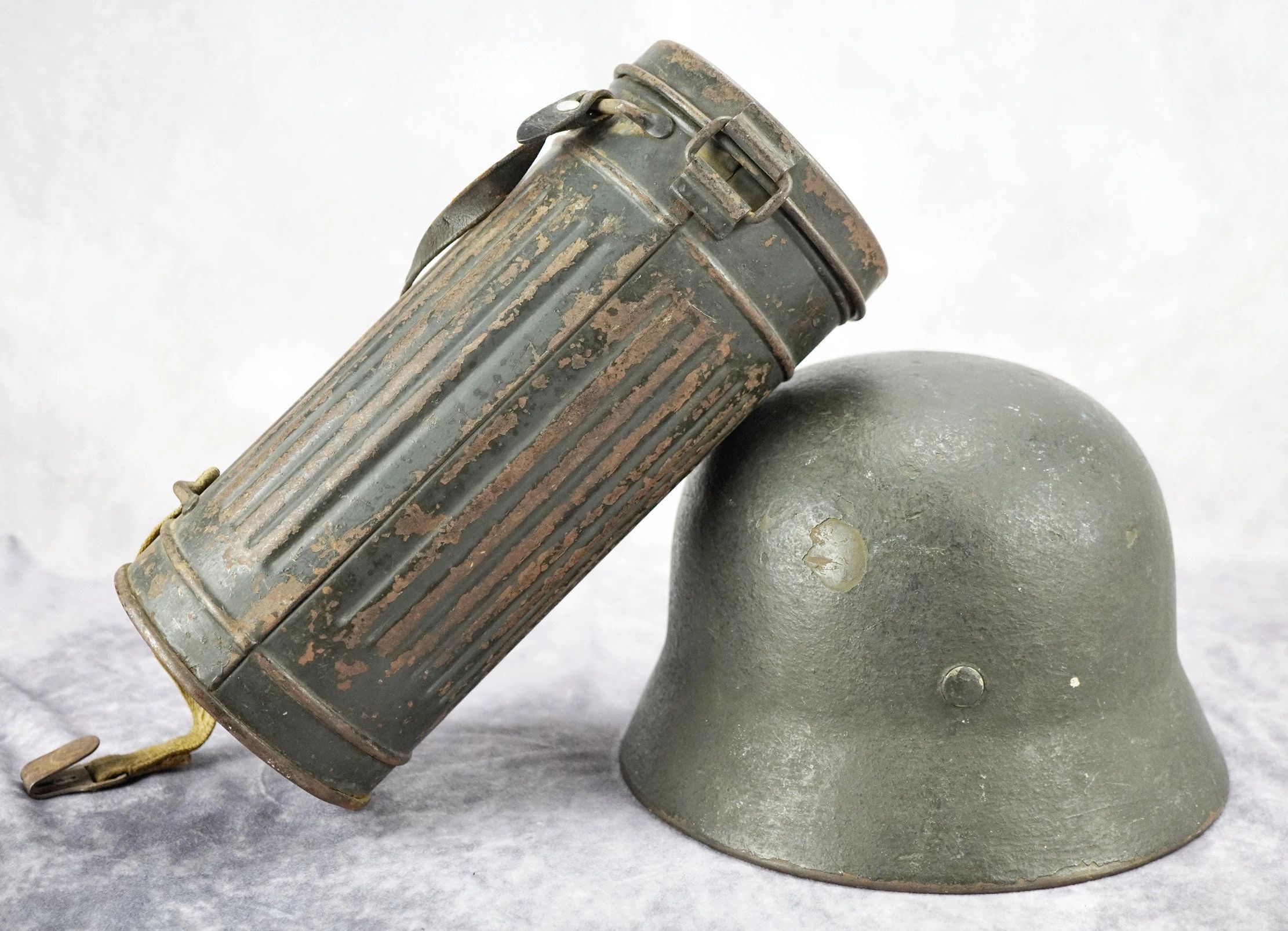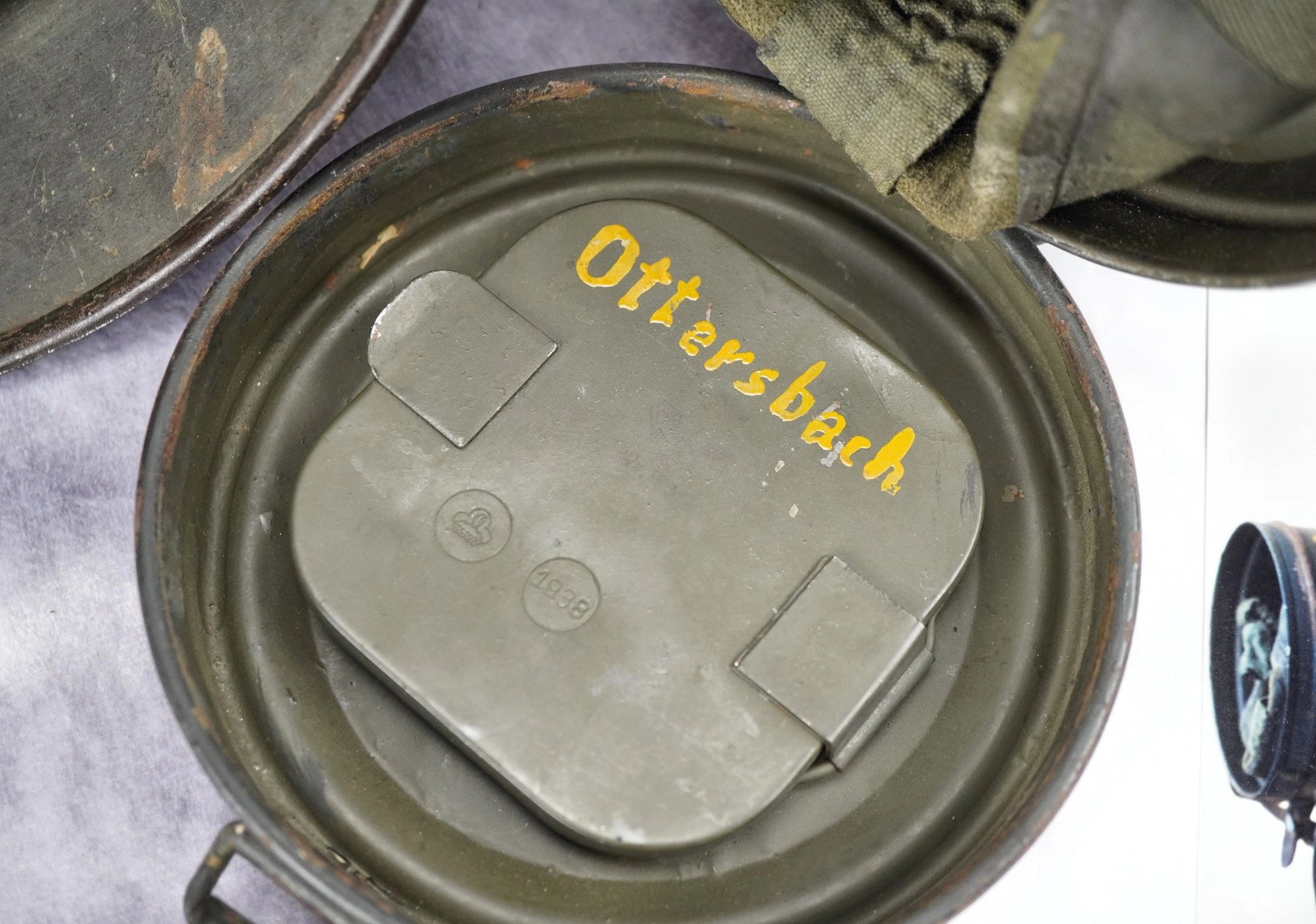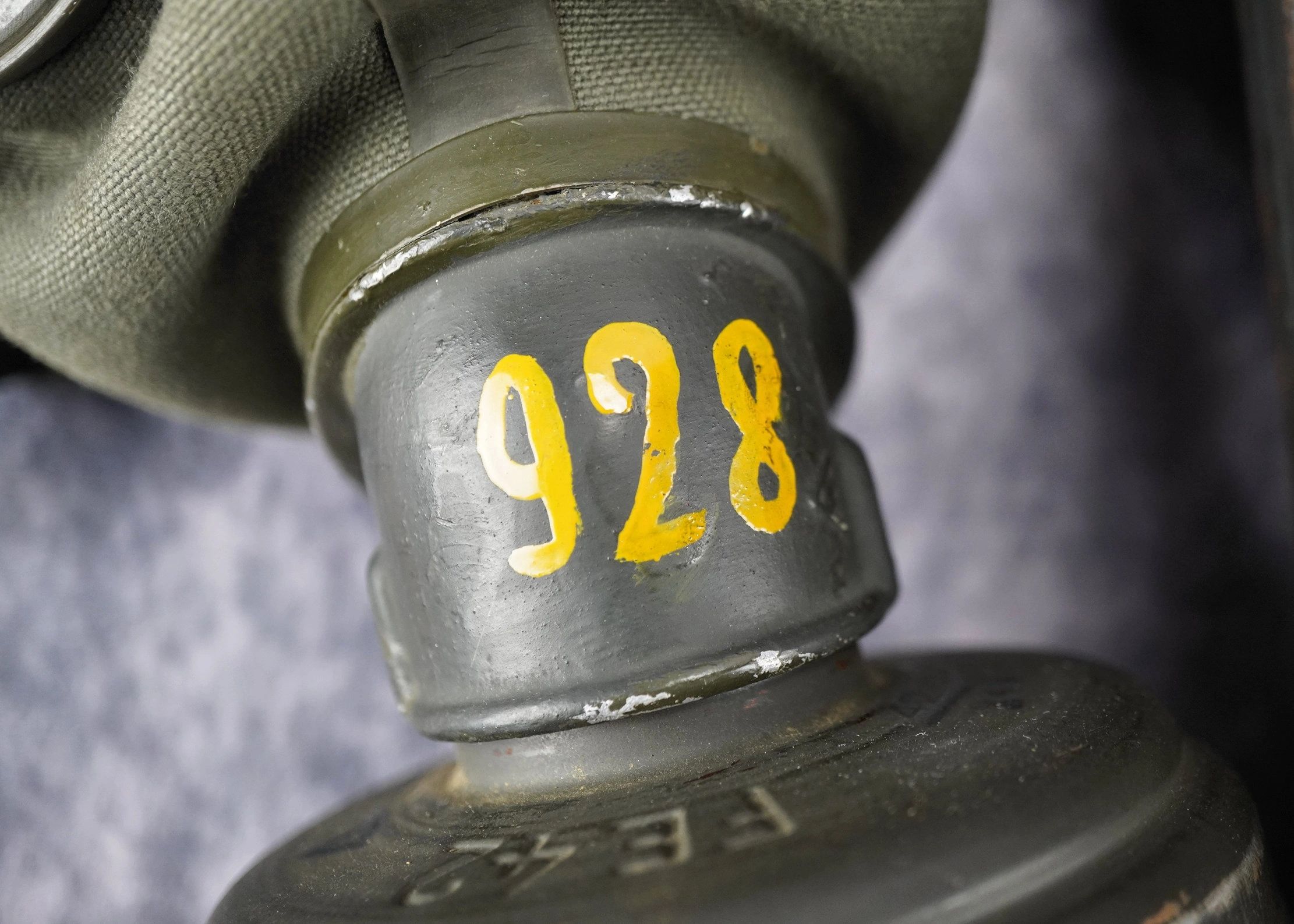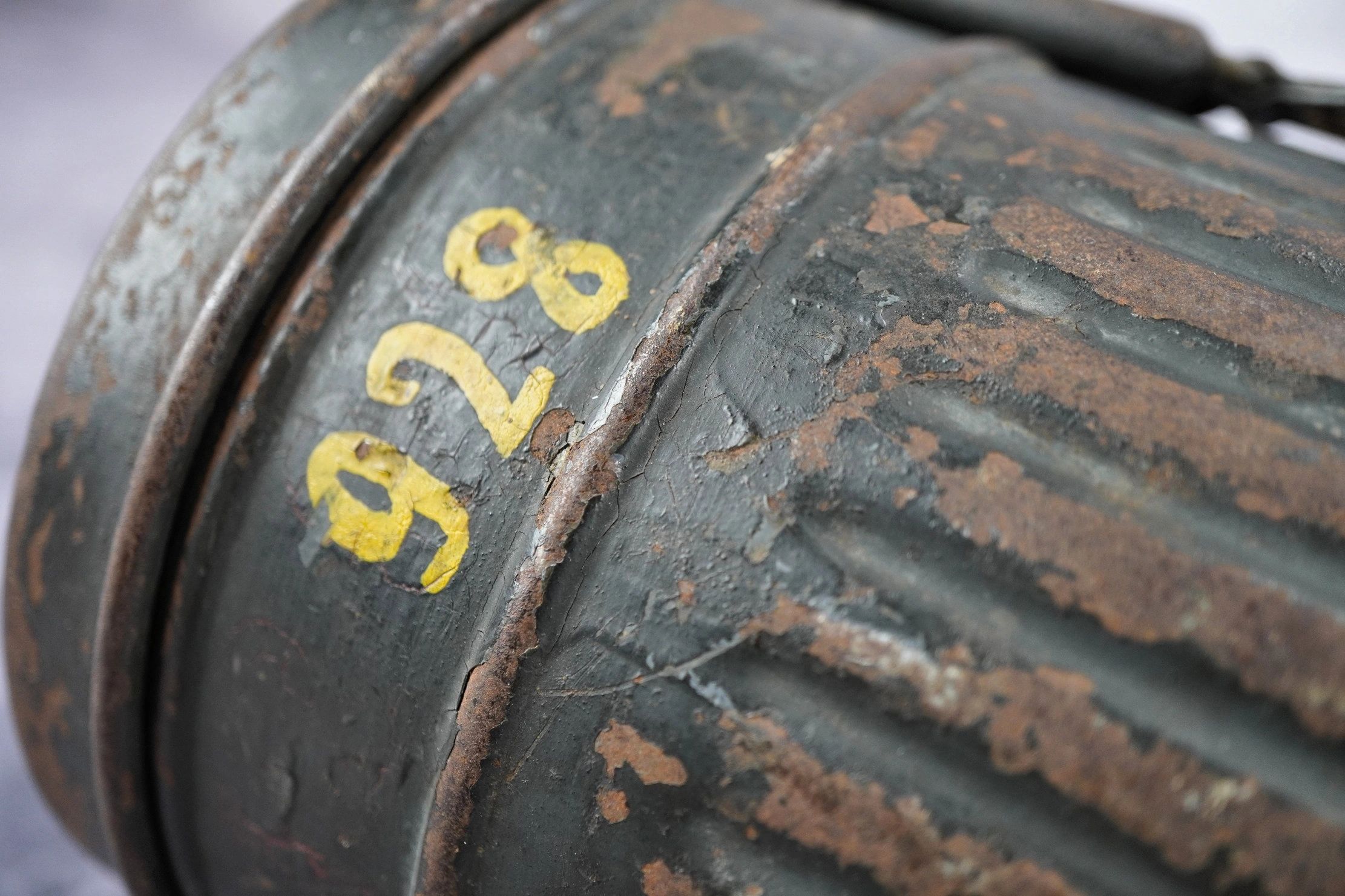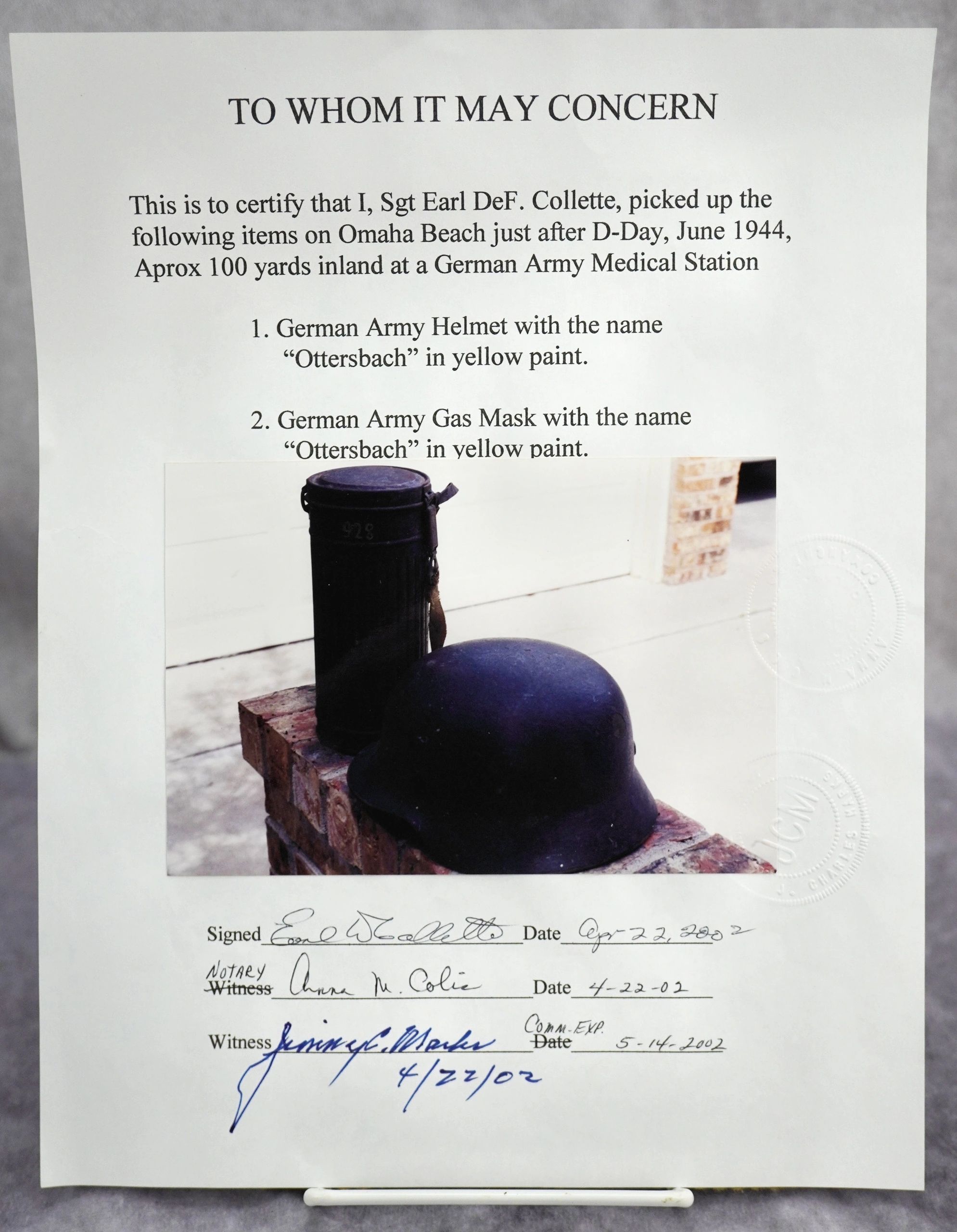Description
Here is your chance to pick up an incredible set of items that have been truly been together since the war. A M35 period overpainted helmet marked ET66 with batch number 4532. Liner is in nice condition and shows signs of use with only two ear tips detached from the drawstring but present. Untouched split pins and an undisturbed dust ring. Can make out the shape of a decal on both sides under the overpaint. Named on the interior for Ottersbach in yellow paint. Also included is his 1944 Wehrmacht issued gas mask with canister. Canister is complete with the spare set of lenses. Can is named on the interior lid to Ottersbach as well in the same matching yellow paint as the helmet. Gas mask and canister marked 928 which is possibly a unit number and this set is UNRESEARCHED currently. The chinstrap, which is missing from the helmet is actually present and attached to the gas mask canister as can be seen in the photos. There are 2 NOTARIZED letters of provenance included, stating that Sgt. Earl Collette picked up both this canister and helmet together around 100 yards inland on Omaha beach close to a German field medical station. As a reminder, the letter is notarized on top of being signed by the veteran who brought the set back from Normandy. An incredible bring back set, which have been together before allied invasion of France and were taken as souvenirs on the most important military campaign for the Americans! THE RESEARCH POTENTIAL OF THIS SET IS ASTRONOMICAL and you have quite a bit to go off of given the last name and possible unit information is painted on the gas mask and canister. CLICK HERE to view more images of this item! The Heer was the land forces component of the Wehrmacht, the regular German Armed Forces, from 1935 until it ceased to exist in 1945 and then formally dissolved in August 1946. During World War II, a total of about 13.6 million soldiers served in the German Army. Germany’s army personnel were made up of volunteers and conscripts. Only 17 months after Adolf Hitler announced publicly the German rearmament program, the Army reached its projected goal of 36 divisions. During the autumn of 1937, two more corps were formed. In 1938 four additional corps were formed with the inclusion of the five divisions of the Austrian Army after the Anschluss in March. During the period of its expansion under Hitler, the German Army continued to develop concepts pioneered during World War I, combining ground (Army) and air (Luftwaffe) assets into combined arms forces. The German military managed quick victories in the two initial years of World War II, a new style of warfare described as Blitzkrieg for its speed and destructive power. Free shipping ANYWHERE IN THE WORLD & I don’t charge PayPal fees like some of the other guys!
